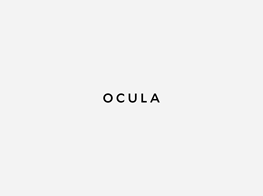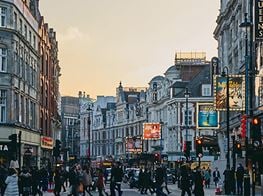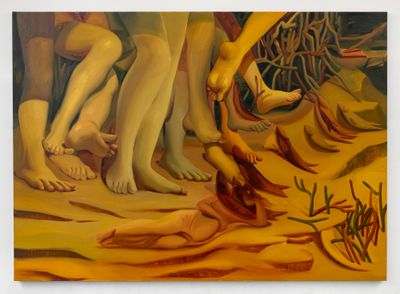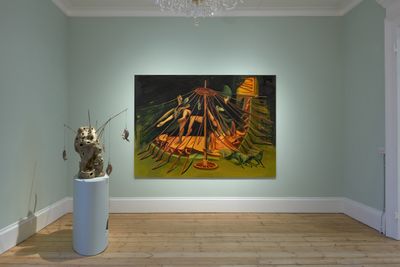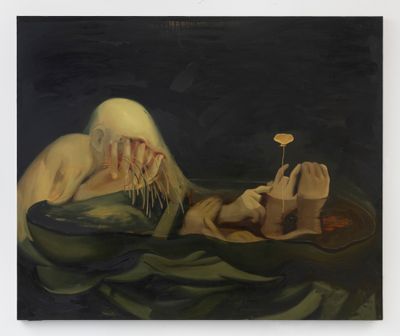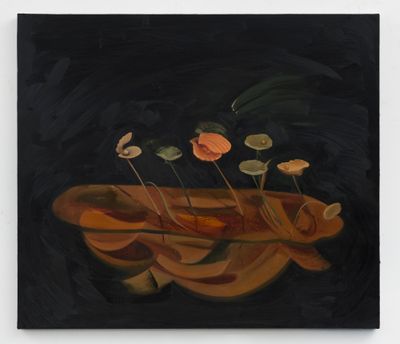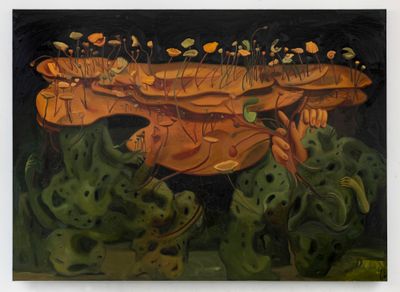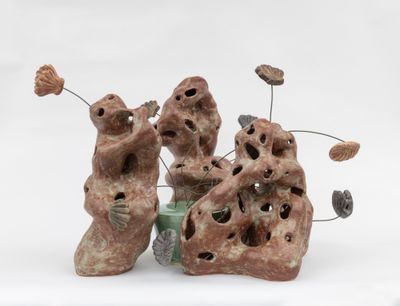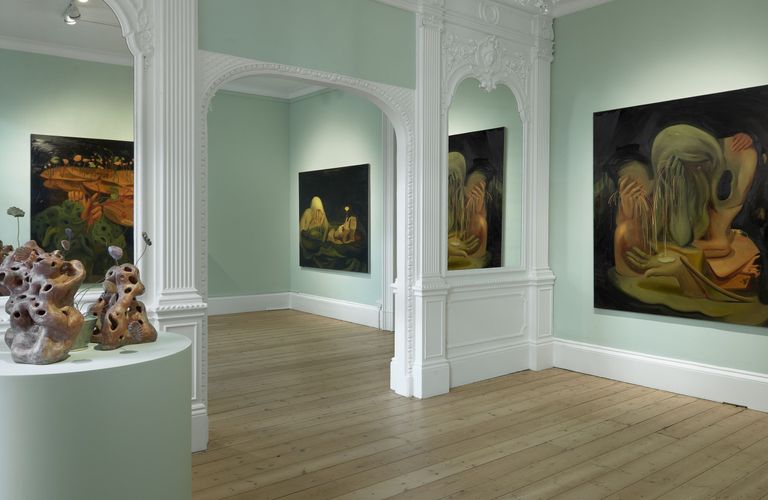
Dominique Fung's Historic Excavations at Massimo De Carlo
As one Dominique Fung show closes, another opens. Off the back of her major installation A Tale of Ancestral Memories (2023) at the Rockefeller Center in New York, the New York-based artist's first solo exhibition in Europe is now open at Massimo De Carlo in London.
On the opening of (Up)Rooted (16 November–20 December 2023), Ocula Advisory sits down with Fung to discuss her start in illustration, the scholar's rocks that populate this London show, and the school field trip to New York that started it all.
Congratulations on your first solo in Europe. Could you introduce the exhibition?
Uprooting and rooting memories, places, people, and things are central themes in (Up)Rooted. This resonates deeply with my personal family history, as it reflects the complexities and nuances of our ancestral journey.
I've made seven paintings and seven sculptures—the show marks the first time I've exhibited a comprehensive group of sculptures. I've always wanted to make sculptures, but felt this body of work just really lent itself to bridging these two disciplines together.
You studied illustration, an unusual start for someone now producing predominantly paintings and sculpture. What led you down that path?
Coming from Ottawa, Canada, I couldn't picture myself becoming a full-time artist. In Canada, there just aren't too many exhibition spaces or museums. I didn't know or see many other artists.
However, in high school, we went on a field trip to New York City that completely blew my mind. I didn't realise there was a whole world of art out there. Off the back of that, I decided to study the illustration programme at Sheridan [College] in Oakville, Ontario. I had plans to become an animator, so it's honestly a fluke that I ended up doing what I'm doing.
Illustration is a very brief-based practice—a skill that must have been helpful when working towards your Art in Focus commission, A Tale of Ancestral Memories at the Rockefeller Center, as many of the works seem very site-specific.
Absolutely. How to juggle multiple projects and draw up mock-ups ahead of projects were important lessons on the course. For the Rockefeller commission, the large mural installed at the Rink [Level] is 30 panels and 125 feet long [3.81 metres].
For this, I made sketches and mock-ups, so I had an idea of how each panel and the finished mural were going to look. This was the only way I could make sense of the mural, which was so long it couldn't fit in my studio.
Compared to your previous paintings, figures seem a lot more prominent in this exhibition, appearing almost gothic with their heads in their hands, crying and practically melting with tears. It's Dali-esque.
The three or four smaller paintings in the show featuring figures—Blooming Sadness and Life is fraught with grief (both 2023), for example—were painted at the beginning of the year when I went through some personal things in my life. They are basically grief paintings.
While I wanted to capture feelings of deep grief, regret, remorse, or sadness, I also wanted to paint hope. The inclusion of small flowers, or a hand resting on the shoulder of a figure, is a nod to the feeling that if we push forward and with the support of others, we will find hope.
With everything that's happening in the world at the moment, these paintings are my way of making sense of these conflicting feelings.
Oyster shells replace flowers atop each stalk. Why?
Originally, I was nervous about making flower paintings. This is my way of making flower paintings without making flower paintings. I want uncanny moments in my work. I want you to linger on the image, spend time with it and dissect it.
With the title (Up)Rooted, I was thinking about our plants and ecosystems, particularly the way roots and the fabric of our society intertwine. In one of the large paintings, To Pull out Ancestral Memories (2023), you'll see the tip of each root shine white, with specks of light visually marking where these roots end, connect, and intertwine.
This metaphorical representation signifies the interconnectedness of humanity, mirroring the intricate networks found in plants and ecosystems. It underscores the perpetual connections we share.
These roots you speak of in To Pull out Ancestral Memories weave between scholar's rocks that also form the basis of your sculptures. Where does this interest lie?
I first stumbled upon scholar's rocks in a garden in Toronto, then again recently in the botanical gardens of the Huntington in L.A. They have an extensive collection of rocks in their beautiful Chinese garden—it's the biggest outside of China.
I feel a deep connection with scholar's rocks as traditional objects of contemplation. As natural objects, they represent the 'bones of the earth', acting as conduits for new ideas.
By integrating fossils and fish, I aim to imbue my work with layered history and depth, creating through lines that hark back to earlier sculptures and paintings. By contemplating time on a broader scale, I explore historical perspectives, while observing the present.
How does this exhibition bridge your painting and sculptural practice?
Remaking a scholar's rock with my hands is a pivotal practice for me. The use of clay imparts an earthy feel that aligns with the thematic essence I aim to channel in the painting: natural materials forging a connection between the tangible past and interpretative present.
This choice of both material and form serves as a bridge between disciplines: unifying sculpture and painting in a harmonious exploration of history and artistry.
There's also quite a collection of scholar's rocks in the British Museum. Will you make a beeline for it when in London for the show?
Yes, my friend suggested that I should pay a visit. I'm intrigued by how while objects placed in museums are held in high regard, painting has always had this prestige on the world stage. By painting objects such as scholar's rocks, I hope to honour these objects with a renewed relevance.
Where else do you look to for inspiration?
It snowballs. I love auction catalogues for all the weird objects that people are willing to buy or resell. For me, it's the changing of hands—where it came from, and where it's going—that I find fascinating.
Next year, I'm heading to a residency in Guadalajara, Mexico so who knows what research rabbit hole I will go down there.
Main image: Exhibition view: Dominique Fung, (Up)rooted, Massimo De Carlo, London (16 November–20 December 2023). Courtesy MASSIMODECARLO. Photo: Robert Glowacki.

